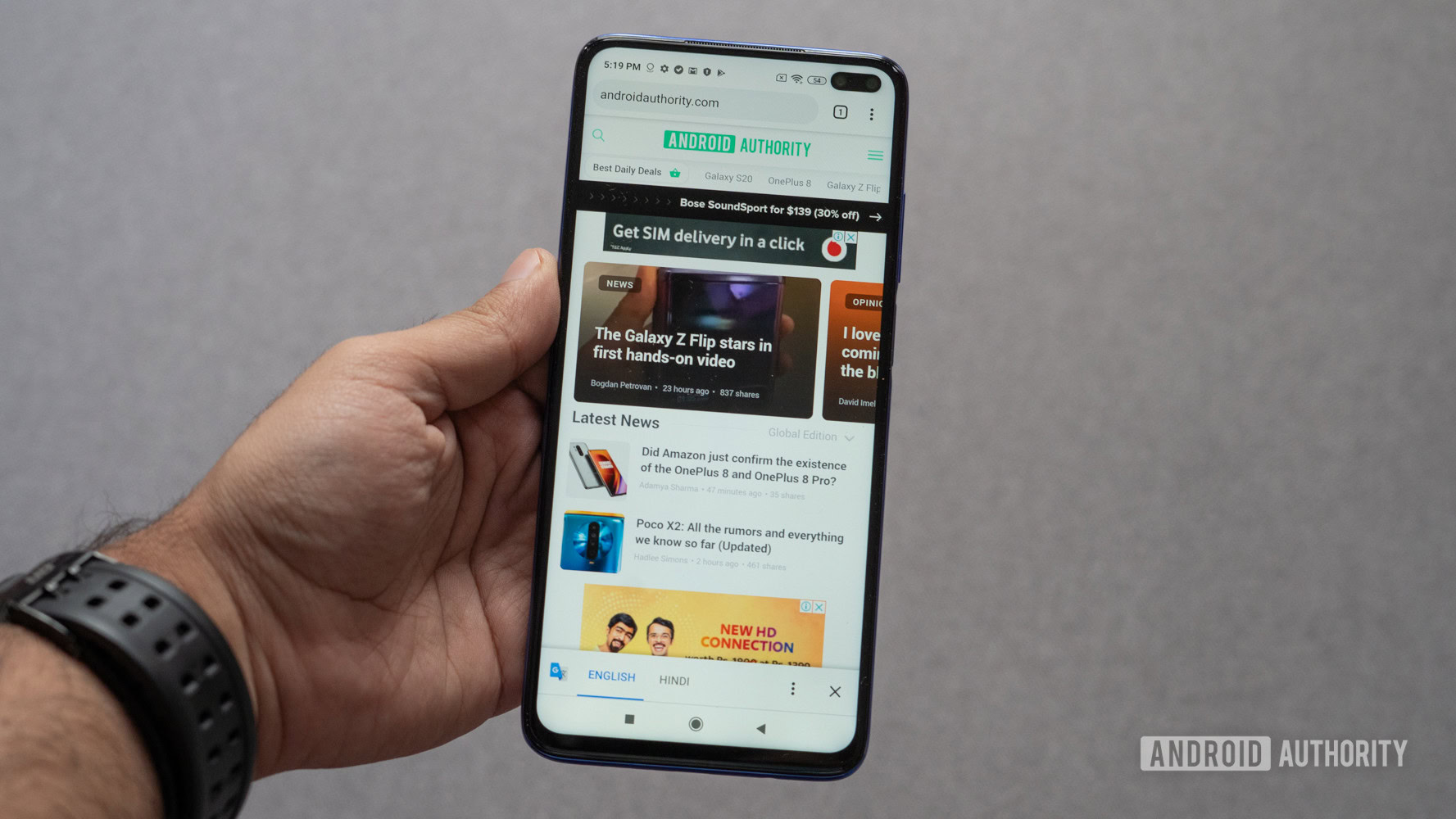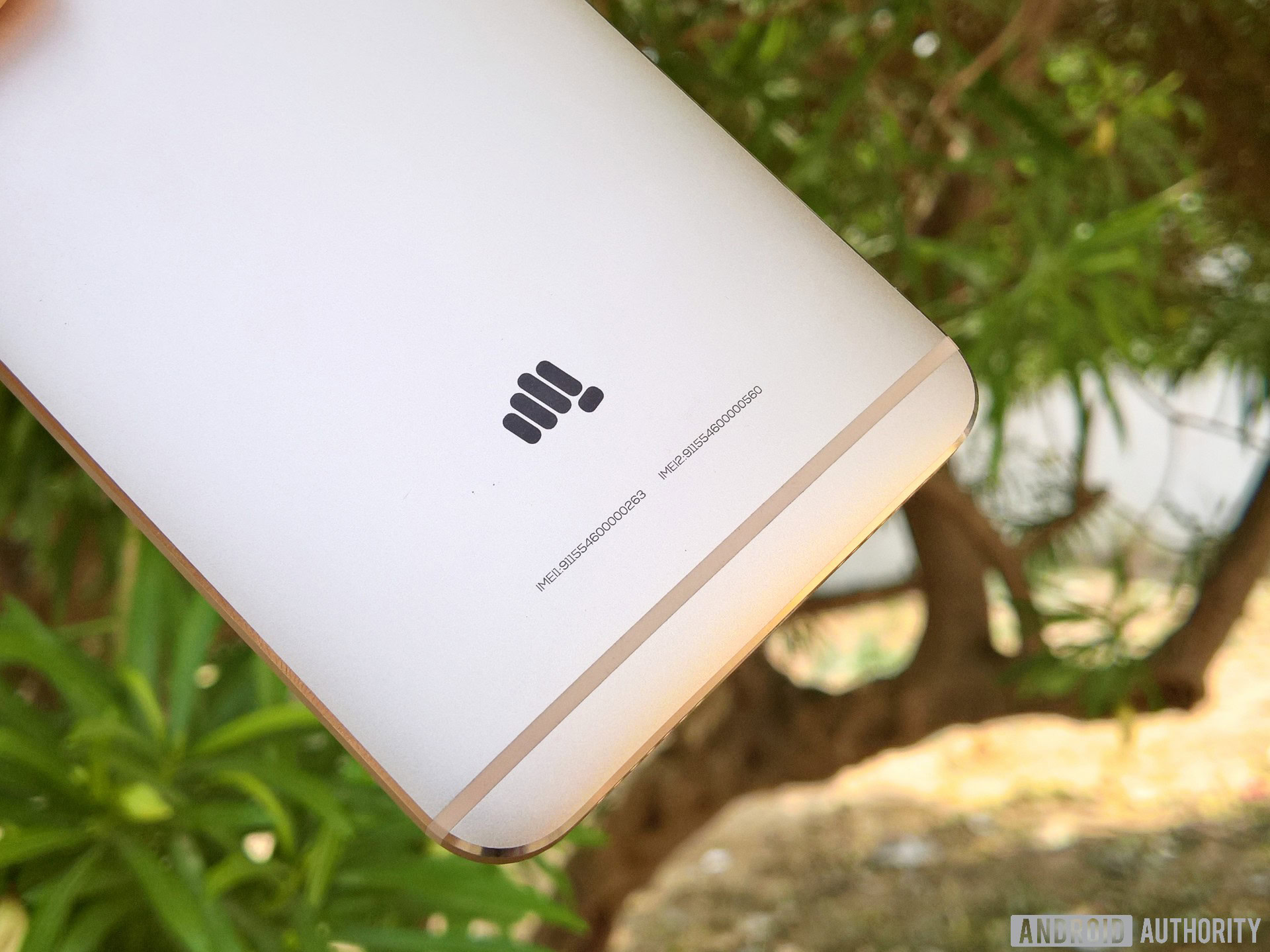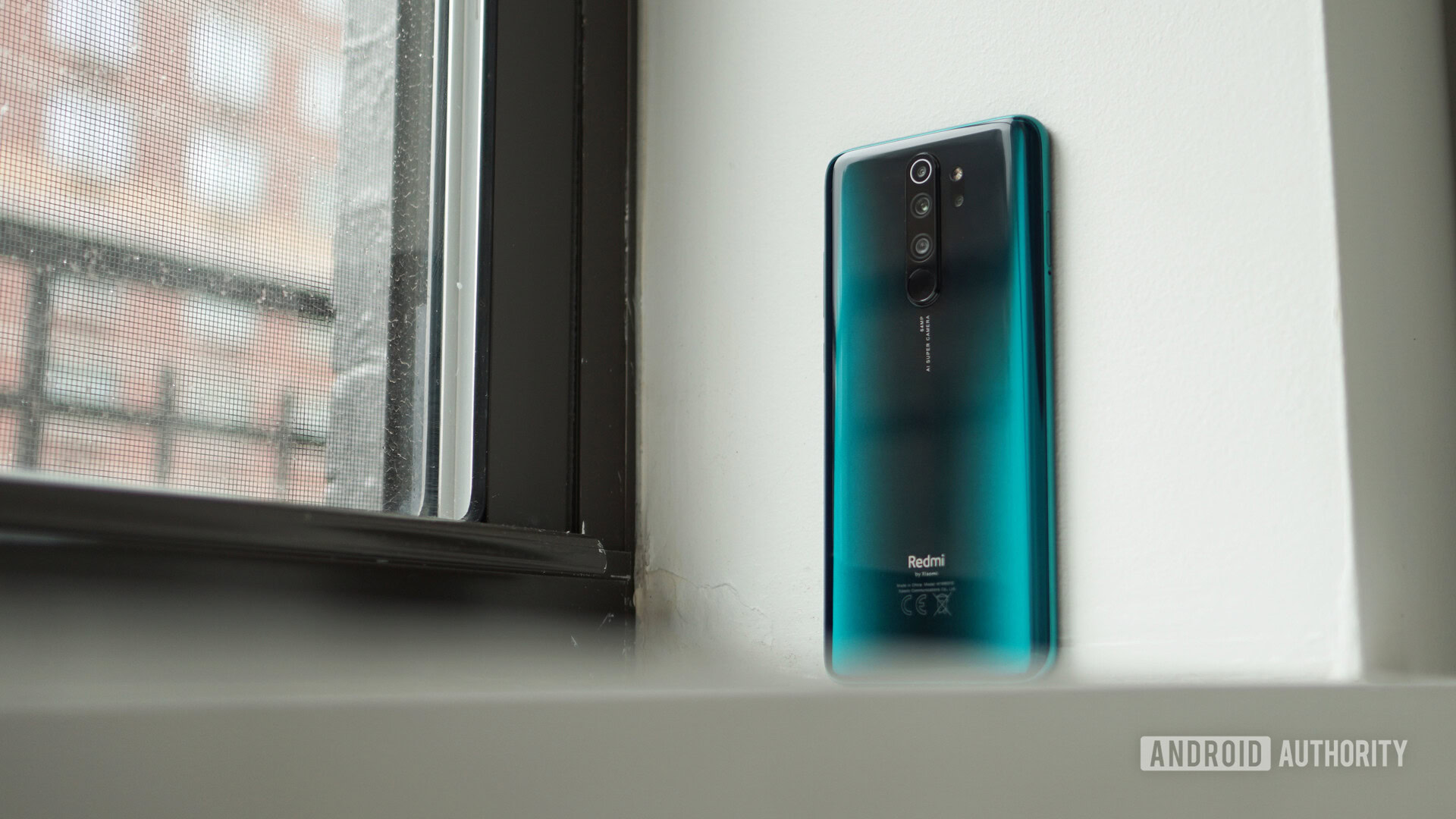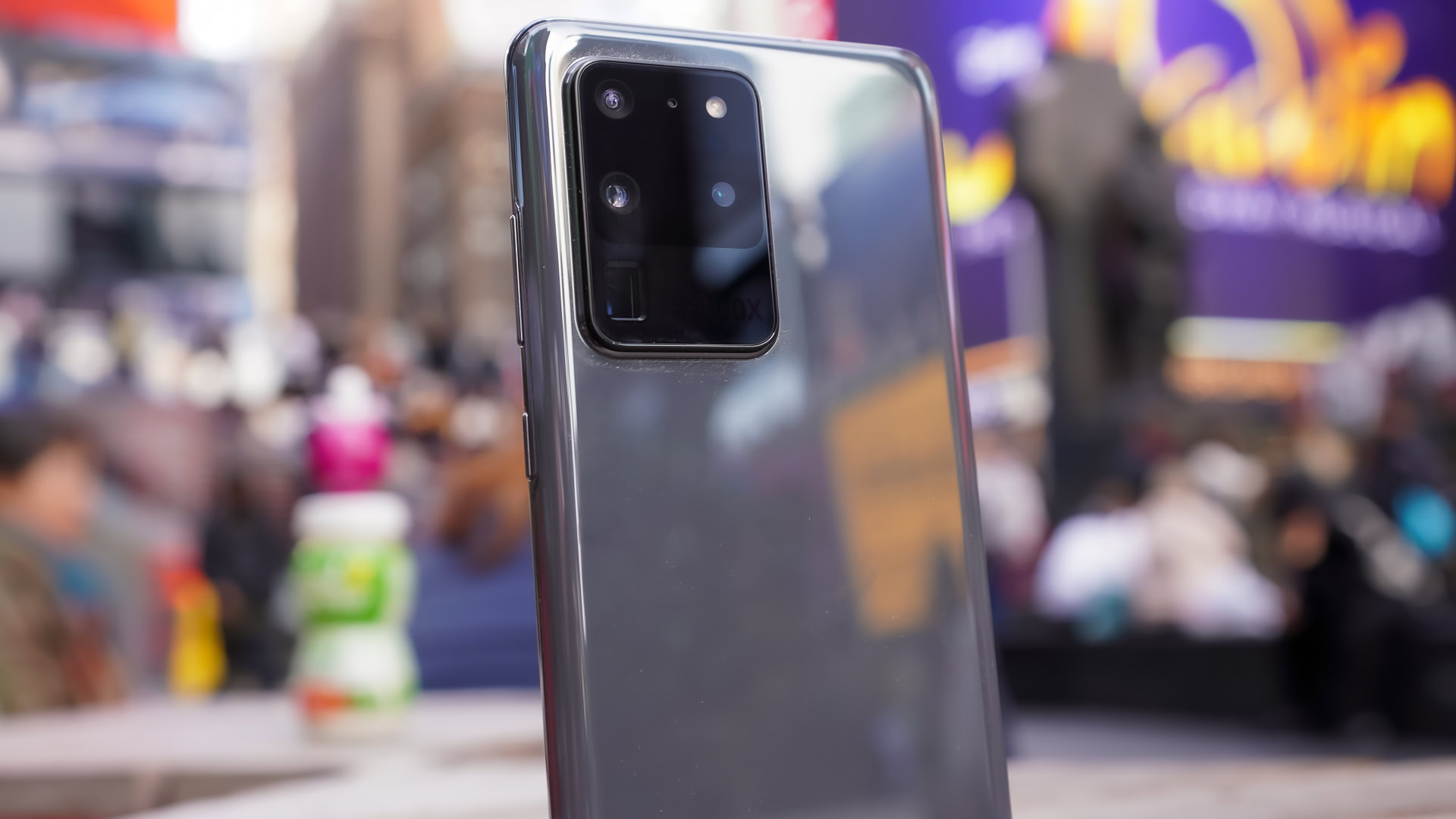Affiliate links on Android Authority may earn us a commission. Learn more.
These are the 4 best smartphone brands in India

When we first wrote this article a few years ago the focus was on brands that were from India, such as Micromax. For better or worse, the face of the Indian smartphone market has changed massively in just a few years. Samsung remains a dominant player in the market but has lost ground to the surge of Chinese phone makers. The biggest casualties though have been Indian companies. The likes of Micromax, Intex, Lava, and Karbonn becoming non-entities in the smartphone scene.
So what are the best smartphone brands in India right now? Let’s take a look. Hint: none of them are actually Indian brands.
The current state of Indian smartphone brands

Indian smartphone brands held a massive market share of around 54% back in 2014. Among them all, Micromax enjoyed the biggest chunk of that pie. At one point, the company even managed to overtake Samsung to become the top smartphone brand in the country. In the meantime, Chinese brands were just starting to find a foothold in the market. At that time, these companies accounted for just 10% of the market.
It only took three years for the script to flip completely. By the end of 2017, Micromax was down to only 6%, while Chinese OEMs captured a little more than 40% of the market. In 2020, companies like Xiaomi, vivo, OPPO, and realme account for close to 70% of the Indian market, while Indian players are all but out of the game.
There are quite a few reasons why this sudden crash occurred. One of the biggest though was the fact that partners eventually became competitors. Indian smartphone brands often relied on white-labeling Chinese devices from the likes of OPPO, Gionee, and vivo and selling them under their own brand names. Eventually, these companies decided to enter the market themselves, with huge investments in product development and marketing. It didn’t take long for Indian brands to quickly fall behind.

There were sputtering attempts to compete of course. But lack of innovation, poor resources, and general complacency left them unable to catch up. Indian smartphone brands failed to predict the sudden rise of 4G in the country. They also wrongly gauged market trends by focusing on the sub-10,000 rupees segment. Ultimately, the sweet spot turned out to be the 10,000 rupees to 20,000 rupees range where Chinese OEMs flourished. Finally, aggressive pricing left many brands unable to compete with Chinese counterparts. Even industry juggernauts like Samsung took years to gain some traction again in the affordable segments in India.
The market share numbers of these companies are unfortunately now negligible. However, Micromax and Lava continue to focus on the sub-5,000 rupees segment, with their ultra-affordable devices available through various offline retailers. Micromax, Lava, and Karbonn also thrive in the feature phone market. But that is a dwindling sector, given the increasing reach and affordability of 4G. Micromax has also found some success in consumer electronics, particularly when it comes to affordable smart TVs.
A comeback is not entirely out of the question but is looking more and more unlikely. Unless something dramatic and wholly unexpected happens, like a new player emerging, we may be at the end of the line for Indian brands in the smartphone industry.
What are the best smartphone brands in India?
1. Xiaomi

Xiaomi first entered the Indian market back in 2014 with the Mi 3, but credit for its meteoric rise has to be given to the ultra-popular Redmi Note. The Redmi Note series absolutely destroyed the competition on the back of an aggressive pricing strategy. It took years for other companies to come up with an answer.
Even in the face of increasing competition, Xiaomi remains a dominant force in the market and the leading smartphone brand in India. Of course, things aren’t as clear cut anymore. Xiaomi spun off Redmi as a sub-brand in 2019 and did the same with POCO earlier this year. With Xiaomi giving its affordable offerings their own identity, Xiaomi is likely attempting to rebrand itself as a premium phone maker as it looks to launch its flagships in India later this year.
Best Xiaomi phones:
- Redmi Note 8 Pro — The Redmi Note series gets better with every iteration and that remains the case with the Note 8 Pro. Featuring a new design language and all-glass build, improved quad-camera setup on the back, a larger battery, and a more powerful processor, it’s no surprise that this is one of the best phones you can get on a budget. The Redmi Note 8 Pro starts at just 13,999 rupees (~$190).
- POCO X2 — POCO may be its own brand, but there’s no denying that the X2 is identical to the Redmi K30 that was launched in China. That doesn’t change the fact though that the POCO X2 is an excellent mid-range smartphone. It comes with a beautiful design, a 120Hz display, dual front-facing cameras, and a whole lot more. Offering all the bang for your buck, the POCO X2 can be yours for 15,999 rupees (~$215).
2. Samsung

Samsung was, until quite recently, the king of the hill in the Indian market. It always had some of the best premium smartphones on offer. For a while, Samsung smartphones were also the only good options as far as budget-friendly devices were concerned. While the former continues to be true, the affordable segment is where Samsung was caught off-guard.
Chinese OEMs not only caused problems for Indian smartphone brands, but also for industry stalwarts like Samsung. It’s only in 2019 that Samsung managed to find its footing in this sector once again with the excellent A-series and M-series of smartphones. Of course, the Galaxy S and Galaxy Note devices remain some of the best, albeit expensive, flagships you can buy.
Best Samsung phones:
- Samsung Galaxy S20 Ultra — The Galaxy S20 Ultra definitely earns its moniker. This phone is likely overkill for many, but it offers every possible feature anyone would want from a smartphone. Excellent performance, gorgeous display, and fantastic cameras continue to be the cornerstones of Samsung’s flagships. Of course, with a starting price of 92,999 rupees (~$1255), this phone isn’t for everybody. With minimal compromise, you can save a decent chunk of money with the Galaxy S20 Plus and Galaxy S20 though.
- Samsung Galaxy A51 — The Galaxy A50 was one of Samsung’s best mid-rangers in 2019, and its sequel is hoping to continue that success. The A51 features a lot of subtle upgrades across the board, but the biggest jump comes with the cameras. You now get a quad-camera setup on the back, headlined by a 48MP shooter, while the selfie camera gets an upgrade as well. The Galaxy A51 is priced at 23,999 rupees (~$325).
3. realme

realme launched in India in 2018, and the company hasn’t stopped making waves since. It initially followed the Xiaomi model to the T, flooding the market with aggressively-priced, budget-friendly smartphones that didn’t fail to impress. It’s certainly been an interesting game of cat and mouse between the two over the last couple of years.
It didn’t take long for realme to start making moves of its own though. It soon became the company that set the trend instead of following it. The company also forayed into the affordable flagship segment last year, and continues to disrupt the market in whichever segment it sets foot in. It’s no surprise that in such a short time, a realme smartphone, the X2 Pro, was crowned Android Authority’s Best of Android in 2019.
Best realme phones:
- realme X50 Pro 5G — It’s realme’s super quick turnaround time that has resulted in the X2 Pro not even being the best device the company has to offer anymore, with the X50 Pro 5G taking its place. With specs and features like the Snapdragon 865, a 90Hz screen, incredibly fast charging, and more, it’s crazy that the X50 Pro 5G is almost half the price of a similarly-specced Galaxy S20, starting at 37,999 rupees (~$515).
- realme 6 Pro — It has only been six months between iterations, but the 6 Pro is a decent upgrade over its predecessor. A faster processor, more RAM, and a larger battery are great, but the key upgrade here is with the cameras. You now get two cameras up-front and the primary shooter of the quad-camera setup on the back is a 64MP unit. The realme 6 Pro can be yours for 16,999 rupees (~$230).
4. OnePlus

OnePlus has done for the premium smartphone market in India what Xiaomi has done for the affordable segment. From its first “flagship killer” in 2014 to the latest and greatest in 2020, OnePlus has continued to disrupt the high-end category by offering a comparatively cheaper alternative to competing devices.
OnePlus has also fully utilized fantastic marketing campaigns to keep the hype train going strong, from its first-ever smartphone to every release since. It’s difficult to garner brand loyalty in a market that is as saturated as India. Somehow, OnePlus has managed to develop a fan following that is unmatched in this price segment.
Best OnePlus phones:
- OnePlus 7T Pro — The OnePlus 7T Pro is an iterative update over its non-T namesake, but if you’re choosing between the two, the former is obviously the better choice. The 7T Pro has a lot going for it. Its most impressive feature, however, is the gorgeous all-screen front with no notches and punch holes anywhere. It may be the most expensive OnePlus smartphone yet, but it is still cheaper than a lot of the competition with a price point of 53,999 rupees (~$725).
- OnePlus 7T — The OnePlus 7T took a lot of people by surprise and has been called the best OnePlus phone the company has made in a while. It brings all the best features of the Pro edition to a more affordable package. As long as you’re okay with a notched display though. The price difference between it and the Pro edition is quite significant too, with the OnePlus 7T setting you back 34,999 rupees (~$470).
Even more options!
As you can see, there really aren’t any Indian smartphone brands around. There are a bunch of fantastic phone makers in the country though, so consumers aren’t without choice. Working with a budget? Don’t forget to check out our budget-specific guides below.